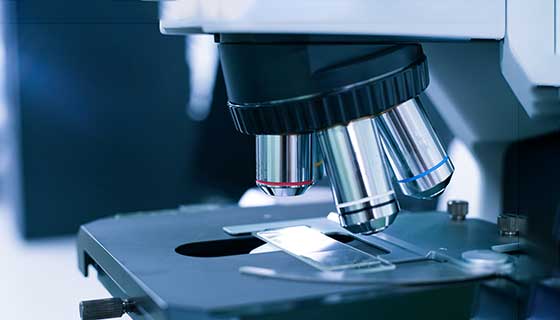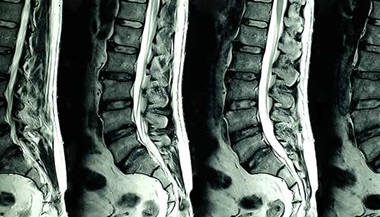Biopsy
What is a biopsy?
A biopsy is a procedure done to remove tissue or cells from the body for examination under a microscope. Some biopsies can be done in a healthcare provider's office, while others need to be done in a hospital setting. In addition, some biopsies can be done with a local anesthetic to numb just the local area involved. Others may need sedation or even full anesthesia that puts you completely asleep during the procedure.
Biopsies are usually done to find out if a tumor is cancerous or to find the cause of an unexplained lesion, mole, infection, or inflammation.
How is a biopsy done?
A biopsy can be done in various ways. It depends on the type of specimen needed. Tissue samples are usually small and taken from tissue that appears changed in structure, such as a tumor.
Types of biopsies
-
Endoscopic biopsy. This type of biopsy is done through a fiberoptic endoscope. This is a long, thin tube that has a close-focusing telescope on the end for viewing. The scope is passed through a natural body orifice (for example, rectum or mouth) or a small incision. It is used to look at the organ in question for abnormal or suspicious areas so that a small amount of tissue can be removed for study. Endoscopic procedures are named for the organ or body area to be viewed or treated. The healthcare provider can insert the endoscope into the gastrointestinal tract (alimentary tract endoscopy), bladder (cystoscopy), abdominal cavity (laparoscopy), joint cavity (arthroscopy), mid-portion of the chest (mediastinoscopy), or trachea and bronchial system (laryngoscopy and bronchoscopy).
-
Bone marrow biopsy. Bone marrow aspiration or biopsy involves taking a small amount of bone marrow fluid (aspiration) and/or solid bone marrow tissue (called a core biopsy). The tissue is usually taken from the back of the hip bones to be examined for the number, size, and maturity of blood cells and/or abnormal cells.
-
Excisional or incisional biopsy. This type of biopsy is often used when a wider or deeper portion of the tissue is needed. Using a scalpel (surgical knife), a full thickness of skin or all or part of a large tumor may be removed for further examination. The wound is sewn closed (with surgical thread).
When the entire tumor is removed, it is called an excisional biopsy. If only a portion of the tumor is removed, it is called an incisional biopsy. For instance, excisional biopsy is the method usually preferred when melanoma is suspected. Both types of biopsies can be done by using local or regional anesthesia. If the tumor is inside the chest or belly, general anesthesia is used. Under some circumstances, surgeons will take an excisional or incisional biopsy that goes immediately to the pathologist while the patient remains under anesthesia. This is to make sure of complete removal of a tumor. One example of this is during Mohs surgery on the face.
-
Fine needle aspiration (FNA) biopsy. This type of biopsy involves using a thin needle and syringe to remove very small pieces from a tumor. Local anesthetic is sometimes used to numb the area. The test rarely causes much discomfort and leaves no scar.
FNA is not used for diagnosis of a suspicious mole. It may be used to biopsy large lymph nodes near a melanoma to see if the melanoma has spread. Breast and thyroid tumors are examples of tumors that may be studied through FNA. A computed tomography scan (CT or CAT scan) may be used to guide a needle into a tumor in an internal organ, such as the lung or liver. An ultrasound, fluoroscopy (a type of continuous X-ray) or other study may also be used for guidance of the needle. A core biopsy is similar to the FNA, but with a larger needle for a larger tissue sample.
-
Punch biopsy. Punch biopsies involve taking a deeper sample of skin with a biopsy instrument that removes a short cylinder, or "apple core," of tissue. After a local anesthetic, the instrument is rotated on the surface of the skin until it cuts through all the layers. This includes the dermis, epidermis, and the most superficial parts of the subcutis (fat).
-
Shave biopsy. This type of biopsy involves removing the top layers of skin by shaving it off. Shave biopsies are used to diagnose some basal cell or squamous cell skin cancers as well as other skin lesions, but they are not recommended for suspected melanomas of the skin. Shave biopsies are also done with a local anesthetic.
-
Reflectance confocal microscopy (RCM). RCM is a technique that allows the healthcare provider to look at an abnormal area of skin to a certain depth without cutting into the skin or removing a skin sample. RCM is used widely in Europe, and it's now available in some centers in the U.S.
.ashx?h=123&iar=0&mh=360&mw=520&w=200&hash=11CC52D714F937FB0F2DF9D36DF07508)
Common biopsy sites
-
Bone marrow
-
Brain
-
Breast
-
Gastrointestinal tract (stomach and intestines)
-
Liver
-
Lung
-
Lymph nodes
-
Skin
-
Thyroid
After a biopsy, the tissue specimen is sent to the pathology lab to be examined and analyzed. The time needed to get results back varies depending on the type of tissue and the tests being done.




